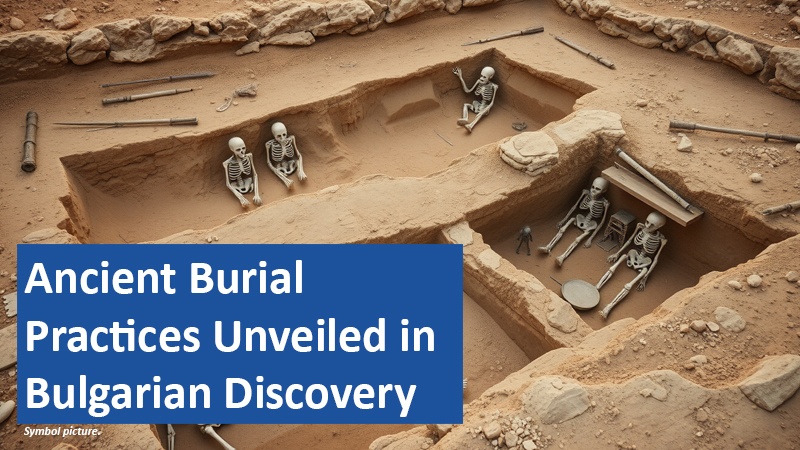
Archaeologists have made a remarkable find near Plovdiv, Bulgaria, uncovering Iron Age graves with bodies buried in a sitting position. This unusual burial practice raises questions about the rituals and beliefs of ancient societies in the region. The discovery could revolutionize our understanding of ancient cultures and their customs regarding death and the afterlife.
Now exclusively try Amazon Prime and Prime Video free for 30 days!
Unique Burial Posture
The excavations revealed a series of graves where the deceased were buried sitting upright and facing west. This practice differs significantly from typical Iron Age burial forms in Europe. Archaeologists uncovered a total of 28 graves arranged in this manner. The age of the graves is estimated to be about 2,500 years old, dating them to between 700 and 500 BC.
Cultural Significance
The sitting position of the buried individuals could indicate special religious or social beliefs. Experts speculate that this posture might symbolize a connection to the afterlife. The western orientation of the bodies could be related to the sunset and associated beliefs about life after death. This discovery sheds new light on the complex spiritual practices of Iron Age societies in the region.
Archaeological Challenges
Preserving and examining the skeletons in a sitting position presented unique challenges for archaeologists. The unusual arrangement of the bones required special excavation techniques and careful documentation. Despite the difficulties, researchers were able to gather valuable information about the age, gender, and possible diseases of the buried individuals. This data contributes to a more comprehensive picture of the population at that time.
Research Implications
The discovery of this unique burial form opens new perspectives for archaeological research in Southeastern Europe. It suggests that Iron Age cultures in this region may have been more diverse and complex than previously thought. The findings raise questions about cultural influences, religious practices, and social structures that will need to be further investigated in future studies.
These extraordinary graves offer a fascinating insight into the beliefs and rituals of a long-lost culture.
What other undiscovered secrets might still be hidden in the soils of Bulgaria and the surrounding regions? How might such discoveries further alter our understanding of the ancient world?
Based on content from www.smithsonianmag.com and own research.